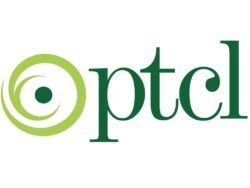Pakistan’s low inflation ignites hope for policy easing

07 April 2024
Published in: Daily Times
In March 2024, Pakistan witnessed a notable downturn in inflation, marking a 23-month low primarily attributed to the base effect. General inflation dipped to 20.7%, down from 23.1% in February, and a significant drop from 35.4% recorded in March 2023.
Similarly, food inflation moderated to 16.6%, signaling a positive shift from the staggering 47.1% seen a year ago. Nevertheless, with monthly inflation now within the policy rate range and real rates turning positive, there is growing optimism for gradual easing in the coming quarters, contingent upon sustained economic stability and favorable indicators.
According to the Pakistan Bureau of Statistics (PBS), the current inflation rate is the lowest observed since May 2022. The observed trend can be attributed to the favorable effects of a stringent monetary policy approach, which is effectively reinforced by continuous fiscal consolidation, reduced global commodity prices, and enhanced domestic crop production and availability.
Notwithstanding, the implementation of restrictive monetary and fiscal policies, the prevailing confidence is driven by the positive progress observed in cyclical conditions within Pakistan’s export markets, which has contributed to a consistent and gradual economic recovery. The implementation of stabilization measures, which aim to bolster business confidence and maintain exchange rate stability, plays a significant role in fostering a favorable economic outlook for Pakistan in the face of persistent obstacles.
The moderate inflation outlook is a result of the present government’s resolute determination to reduce inflationary pressure through the implementation of stricter administrative measures. Compared to the previous year, the agricultural sector exhibits a positive prognosis in 2023, as evidenced by the production of Kharif crops.
Rabi 2023-24 is anticipated to yield favorable results due to the precise timing of wheat sowing under its objective.
Exports of products and services increased by 15.8% between January and December of 2024, as a result of the resurgence of the economy in Pakistan’s primary export markets and the increase in domestic economic activity. Presently, the state of the economy in the leading export markets has strengthened and surpassed the neutral 100 benchmark. The seasonally adjusted LSM output in January 2024 in Pakistan continues to surpass the neutral benchmark, suggesting the resurgence of large-scale manufacturing output on a cyclical pattern.
Considerably, the economic outlook for Pakistan is depicted in the United Nations’ World Economic Situation and Prospects report for 2024. The report forecasts a moderate GDP growth of 2% in 2024, with a marginal improvement to 2.4% in 2025.
Moreover, on March 28, 2024, the Pakistan stock market surpassed the 67,000 mark, signifying a momentous milestone. This indicator of progress toward the current administration’s ambitious economic objective is encouraging. Furthermore, the IMF program’s successful culmination contributed to a period of consistent economic expansion.
For economic stability, the government is now developing a twofold strategy that includes structural changes aiming at improving the tax-to-GDP ratio, comprehensive reorganization of the FBR, and privatization of PIA and other SOEs. It illustrates that Pakistan’s current decreasing inflation trajectory is the outcome of all of the government’s comprehensive and structural reforms and policies aimed at economic stability.
Under the SIFC’s broader plan, GDP shows a recovery, owing mostly to a 5% increase in the agricultural sector. The agriculture and livestock industries are expected to maintain their growth pace, as predictions show a significant increase in wheat, rice, and maize yields for the current season. The recent increase in the prices of Pakistan’s bonds and Sukuk, together with positive appraisals from major financial institutions such as Bank of America, Moody’s Investors Service, and Goldman Sachs, suggests a bright future for the country’s economic prospects.
To revitalize the national economy, the Pakistani government is also emphasizing the execution of a stringent enforcement approach directed at criminal organizations and unlawful activities, with a specific focus on money laundering, stockpiling, and smuggling. The illicit trade and smuggling have resulted in revenue losses amounting to billions of dollars.
Pakistan’s economy is on a gradual but promising path of recovery. The country has shown remarkable resilience during the pandemic era and is trying to overcome its fiscal, monetary, external, and industrial sector challenges despite the global economic recession. Pakistan has successfully reduced its fiscal deficit, increased its foreign exchange reserves, stabilized its currency, and boosted its exports and remittances.
Furthermore, Pakistan has undertaken several structural reforms and policy initiatives aimed at bolstering its economic competitiveness, governance, and social welfare. These efforts have garnered commendation from esteemed international
financial institutions such as the International Monetary Fund (IMF), World Bank (WB), and Asian Development Bank (ADB). The establishment of the Special Investment Facilitation Council (SIFC) is a program that seeks to attract international investment and enhance economic growth. SIFC has granted preliminary approval for 28 projects with a total value in the billions of dollars, which are intended to be presented to Gulf nations for investment. These projects encompass the development of the Diamer-Bhasha dam and mining activities at Reko Diq.
Pakistan’s economy is showing signs of steady improvement, the concerted efforts of the government, including stringent monetary policies and structural reforms, have contributed to this positive trajectory. Nevertheless, the achievement of durable economic recovery necessitates the ongoing implementation of fiscal consolidation and a cautious policy approach, as well as the timely and sufficient inflow of financial resources to address gross financing requirements and maintain stability in the external sector.





